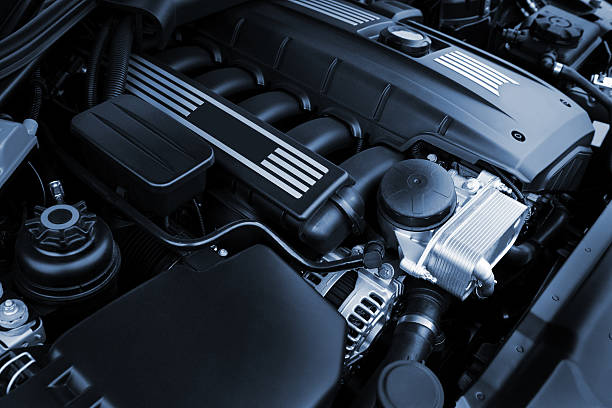Hydraulic Power Steering: The Unsung Hero of Smooth Driving
Imagine effortlessly maneuvering a two-ton vehicle through tight city streets or winding mountain roads. This seamless control, often taken for granted, is largely thanks to hydraulic power steering. A cornerstone of modern automotive design, this system has revolutionized driving dynamics, comfort, and safety. Let's dive into the fascinating world of hydraulic power steering, exploring its inner workings, evolution, and enduring relevance in today's automotive landscape.

How Hydraulic Power Steering Works
At its core, hydraulic power steering utilizes fluid pressure to assist in turning the wheels. The system comprises several key components: a pump driven by the engine, a hydraulic cylinder, and a rotary valve. When the driver turns the steering wheel, the rotary valve directs pressurized fluid to the appropriate side of the hydraulic cylinder. This pressure then assists in moving the steering linkage, significantly reducing the effort required to steer the vehicle.
The Mechanical Marvel: Precision in Motion
The genius of hydraulic power steering lies in its ability to provide variable assistance. At low speeds, when more steering effort is typically needed, the system offers maximum assistance. As vehicle speed increases, the assistance gradually decreases, ensuring the driver maintains a good feel for the road. This variable assist feature is achieved through a clever design that takes into account both steering input and vehicle speed, creating a responsive and intuitive driving experience.
Hydraulic vs. Electric Power Steering
While electric power steering (EPS) has gained popularity in recent years, hydraulic systems still hold their ground in certain vehicle segments. Hydraulic power steering is renowned for providing superior feedback and a more natural steering feel, particularly appreciated in performance and luxury vehicles. It excels in handling heavy loads and offers unparalleled durability, making it a preferred choice for trucks and large SUVs.
The Environmental Consideration
One of the challenges facing hydraulic power steering is its impact on fuel efficiency. The constant operation of the hydraulic pump, even when steering assistance isn’t needed, results in a small but continuous power drain on the engine. This has led to innovations in the field, including electro-hydraulic systems that aim to combine the best of both worlds – the feel of hydraulic steering with the efficiency of electric systems.
Future Prospects: Evolution, Not Extinction
Contrary to popular belief, hydraulic power steering is not becoming obsolete. Instead, it’s evolving. Advanced hydraulic systems are being developed with a focus on energy efficiency and integration with modern vehicle electronics. These systems promise to retain the beloved characteristics of hydraulic steering while addressing its shortcomings. For instance, variable-displacement pumps and on-demand hydraulic systems are emerging technologies that significantly reduce energy consumption without compromising performance.
The Role in High-Performance Vehicles
In the realm of high-performance and racing vehicles, hydraulic power steering continues to reign supreme. The system’s ability to handle extreme forces and provide consistent feedback makes it indispensable in environments where split-second decisions and precise control are critical. Many sports car manufacturers still opt for hydraulic systems, often citing the unparalleled steering feel and driver connection they provide.
Maintenance and Longevity
One of the often-overlooked advantages of hydraulic power steering is its longevity and ease of maintenance. With proper care, these systems can last the lifetime of the vehicle. Regular fluid checks and occasional flushes are typically all that’s required to keep the system in top shape. This reliability and simplicity contribute to the system’s enduring popularity, especially in regions where advanced automotive technologies might be challenging to service.
The Human Factor: Driving Experience and Safety
The impact of hydraulic power steering on driving experience and safety cannot be overstated. By reducing the physical effort required to steer, especially at low speeds or during parking maneuvers, it has made driving more accessible to a broader range of people, including those with limited upper body strength. Moreover, the system’s responsiveness in emergency situations, allowing for quick evasive maneuvers, has undoubtedly contributed to improved road safety over the decades.
In conclusion, hydraulic power steering stands as a testament to automotive engineering ingenuity. Its ability to blend mechanical simplicity with sophisticated performance has ensured its place in the automotive world for over half a century. As we look to the future, it’s clear that this technology, far from fading away, is adapting and evolving. Whether in its traditional form or in hybrid electro-hydraulic systems, the principles of hydraulic power steering will continue to shape our driving experiences for years to come, reminding us that sometimes, the most impactful innovations are the ones we barely notice as we navigate the open road.





